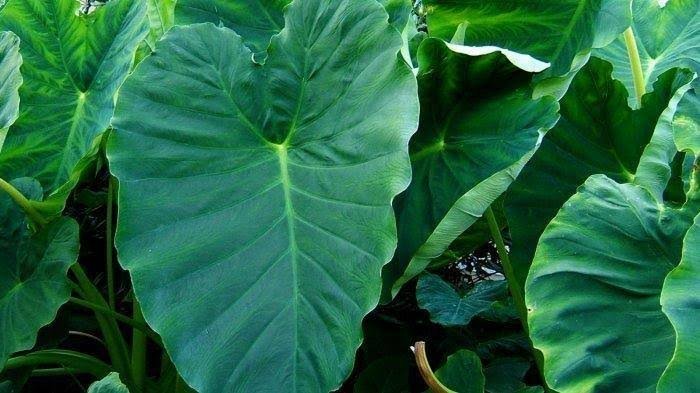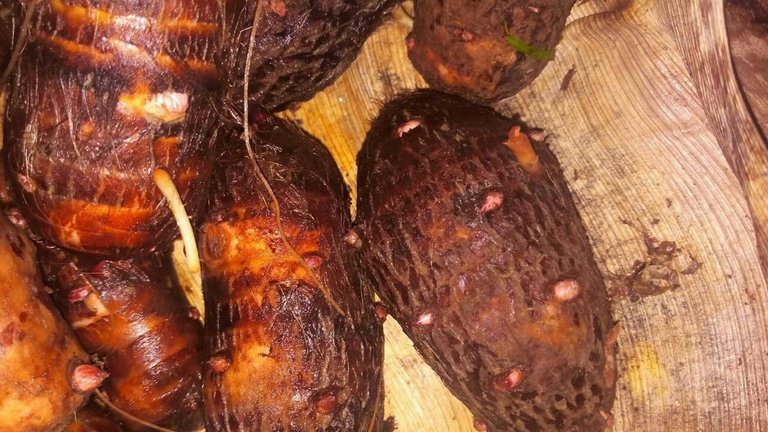Asslamun'alaikum warahmatullah hiwabarakatu
Good night friends peakd everyone On this happy night, I would like to post about plants that may seem somewhat rare to some people, none other than the name of the fruit of the plant, taro or taro. Taro plants are soft-stemmed plants that grow in fertile soil and are easily crushed with tools such as hoes and shovels and can even be taken just by prying them with wooden sticks.
Why is that because taro plants bear fruit in the soil like cassava plants that reproduce in the soil, but what feels special about taro plants is that they can grow on their own if there is still leftover fruit that we harvest in the soil.
Taro fruit is very similar to cassava fruit.It has a fruit size that is almost the same size and length as cassava fruit, what distinguishes taro fruit from cassava is the color of the fruit which is almost categorized into purple. The stem of the taro plant is different from the trunk of the cassava tree, the taro plant has a soft and unbranched stem like the cassava plant. taro plant stems are very similar to swamp plants which only have one leaf per stem, the leaves of the taro plant are very large. Not only the fruit is beneficial, but the stems also have a variety of benefits.






Here are some of the benefits that can be taken from taro plants, among others;
✓Overcoming digestive problems.
✓Caring for healthy skin and hair.
✓Helps vision problems.
✓Overcoming high blood problems.
✓Good for diabetics.
✓Boosters the immune system and blood flow.
✓Helps maintain weight.
✓Prevent heart disease and cancer.
As people who live in rural areas, it is not uncommon for many rural people to take taro stems to be used as food ingredients such as vegetables in certain regional dishes, friend. While taro fruit can only be eaten after cooking or usually boiled in hot water until it is cooked perfectly and after that it is ready to eat.
Taro fruit or taro are widely used as snacks for taro chips which are usually made by the community to be sold or eaten by themselves. Now, brothers and sisters, the discussion about taro plants may be of benefit to be used as useful knowledge for others.